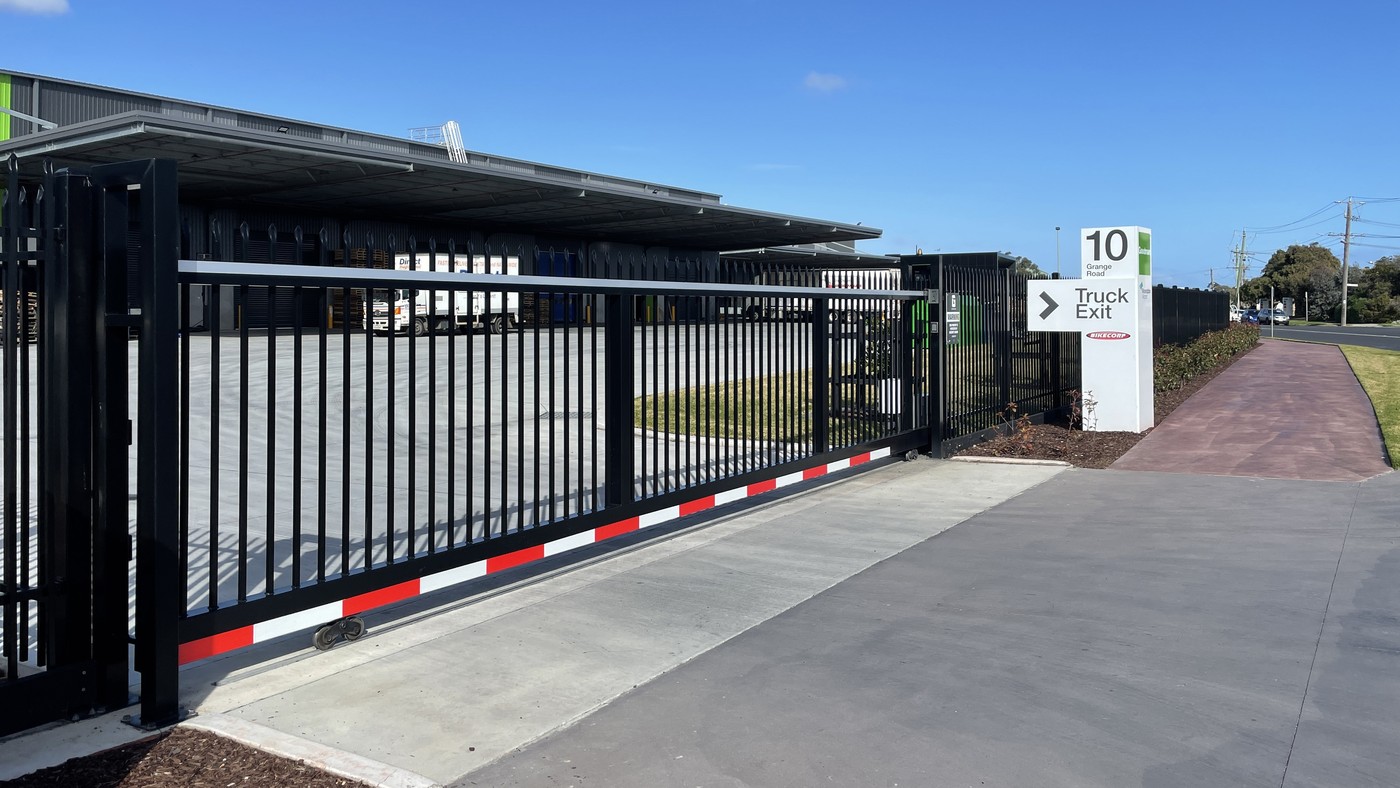
Electric Driveway Gates
Electric driveway gates are automated gates that control access to a property, typically operated by a motor and controlled via remote, keypad, sensor, or smartphone app. These gates enhance security, privacy, and convenience. They come in various styles, including sliding, swinging, cantilever, telescopic, and bi-folding, and can be made from materials like metal, wood, or composite. Electric gates often include safety features such as sensors to prevent accidents, intercom systems for communication, and battery backups for operation during power outages. They are popular in residential, commercial, and industrial settings for their ease of use and added protection.
How Do Electric Driveway Gates Work?
Electric driveway gates work through a combination of mechanical and electronic components to provide automated access control. Here’s a simplified explanation of their operation:
Key Components:
- Gate: The physical barrier, which can be a swing gate, sliding gate, or bi-fold gate.
- Motor: An electric motor that drives the movement of the gate.
- Control Unit: The brain of the system that receives signals from various inputs and controls the motor.
- Power Supply: Provides the necessary electrical power to the system, often with a battery backup for operation during power outages.
- Remote Controls/Keypads/Sensors: Devices that allow users to operate the gate remotely or automatically.
- Safety Sensors: Infrared sensors or photo eyes that detect obstacles and prevent the gate from closing on them.
- Intercom System: Allows communication with visitors for access control (optional).
How It Works:
- Activation: The gate is activated via a remote control, keypad entry, sensor, smartphone app, or intercom system.
- Signal to Control Unit: The activation signal is sent to the control unit, which processes the input.
- Motor Activation: The control unit sends a command to the motor to either open or close the gate.
- Gate Movement: The motor drives the mechanical movement of the gate along its track (sliding gate) or hinges (swing gate).
- Safety Checks: During operation, safety sensors monitor for obstacles. If an obstacle is detected, the control unit stops or reverses the gate to prevent accidents.
- Completion: Once fully opened or closed, the motor stops, and the gate remains in the desired position until the next activation.
Additional Features:
- Battery Backup: Ensures the gate operates during power outages.
- Timed Closing: The gate can automatically close after a set period.
- Intercom/Camera: Enhances security by allowing property owners to verify visitors before granting access.
Pros and Cons of Electric Gates vs. Manual Gates
Electric Gates
Pros:
- Convenience: Operated remotely, allowing easy access without leaving the vehicle.
- Security: Enhanced security features like keypads, intercoms, and cameras.
- Safety: Sensors and automatic reversing prevent accidents.
- Automation: Can be programmed for timed closing and integrated with home automation systems.
- Aesthetics: Often seen as a modern and high-end feature, adding value to the property.
- Weather Resistance: Some systems are designed to function well in various weather conditions.
Cons:
- Cost: Higher initial cost for purchase and installation.
- Maintenance: Requires regular maintenance of electrical components and mechanical parts.
- Power Dependency: Relies on electricity, though battery backups can mitigate power outage issues.
- Complexity: More complex to install and may require professional servicing.
- Potential Malfunctions: Electrical systems can fail or be disrupted, requiring technical support.
Manual Gates
Pros:
- Cost: Lower initial cost and simpler to install.
- Simplicity: Fewer components mean less can go wrong.
- Maintenance: Generally easier and cheaper to maintain.
- Reliability: Not dependent on electricity, always functional regardless of power status.
- Customization: Easier to customize and repair without specialized parts.
Cons:
- Convenience: Requires manual operation, which can be inconvenient, especially in bad weather.
- Security: Less secure as they can be easier to breach without electronic locks and access controls.
- Safety: No automated safety features to prevent accidents or injuries.
- Effort: Requires physical effort to open and close, which can be challenging for some users.
- Aesthetics: May be seen as less modern or luxurious compared to electric gates.
Conclusion
- Electric Gates: Ideal for those who prioritize convenience, security, and modern features, and are willing to invest in higher initial and maintenance costs.
- Manual Gates: Suitable for those looking for a cost-effective, simple, and reliable solution without the need for advanced features and automation.
